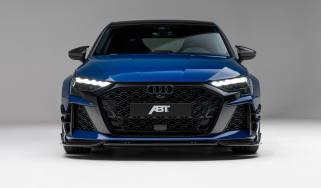'Renault Sport set the bar for 21st-century hot hatchbacks'
Richard Meaden reflects on the golden age of Renault Sport hot hatches, and what the future might hold for Alpine EVs
The name might feel like a millennial phenomenon, but you can trace Renault Sport’s origins back to 1976, when Renault decided to rationalise its competition activities and stop Alpine and Gordini from bickering. Now, some 48 years later, the final Renault Sport model has ceased production and Renault’s motorsport activities are back under the Alpine banner.
It sure was good while it lasted. In fact, for a golden period between 1998 and 2015, Renault Sport could basically do no wrong, launching the sub-brand with the feisty Phase 1 RS Clio 172 and knocking it out of the park with each successive iteration.
After 2015, the less-than-stellar Clio IV failed to respond to the RS treatment (largely, but not solely, due to the lack of a manual gearbox), but the RS Méganes continued to carry the flame, the most extreme versions morphing into caged, two-seater lightweight exotics. What united all those cars was the sense that they were designed, engineered and honed by people who looked for the same qualities we do, not to mention a continuity that ensured a consistent level of excellence.
That’s how Renault Sport set the bar for 21st-century hot hatchbacks, and while others showed fleeting flashes of brilliance – the first and second-gen Mini GPs, for example – none can boast the same modern-day legacy. Not for nothing would we regularly liken these RSs to Porsche’s dynasty of water-cooled RS 911s.
I was very downbeat when it became clear Renault Sport was done and dusted, but a visit to Alpine’s key production facilities revealed that many of the people who made those brilliant hot hatches have stayed to hone the next generation of electric driver’s cars. As someone who frequently despairs at where things are headed, this is a beacon of hope. After everything they have given us, we should keep the faith. The king is dead; long live the king!





